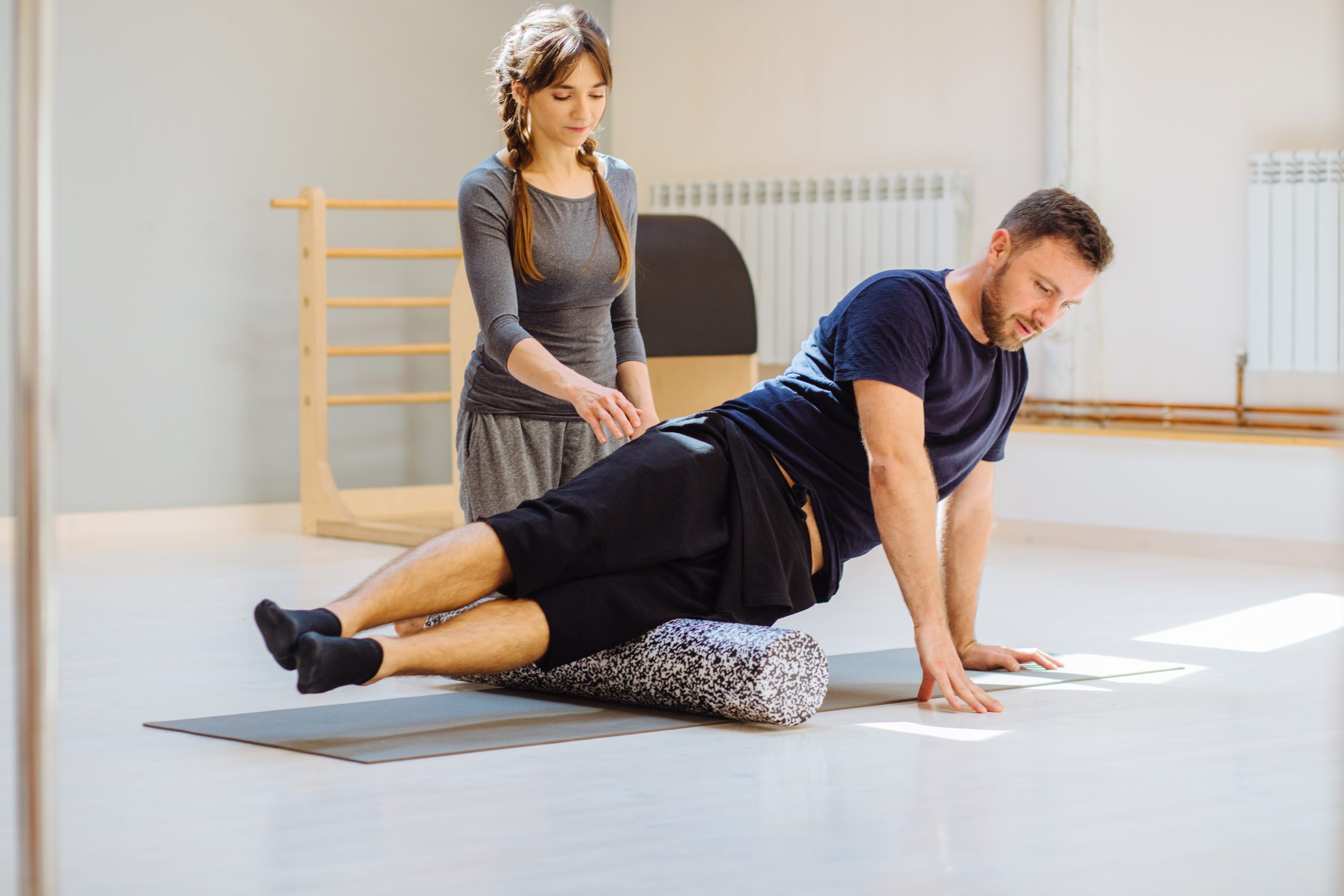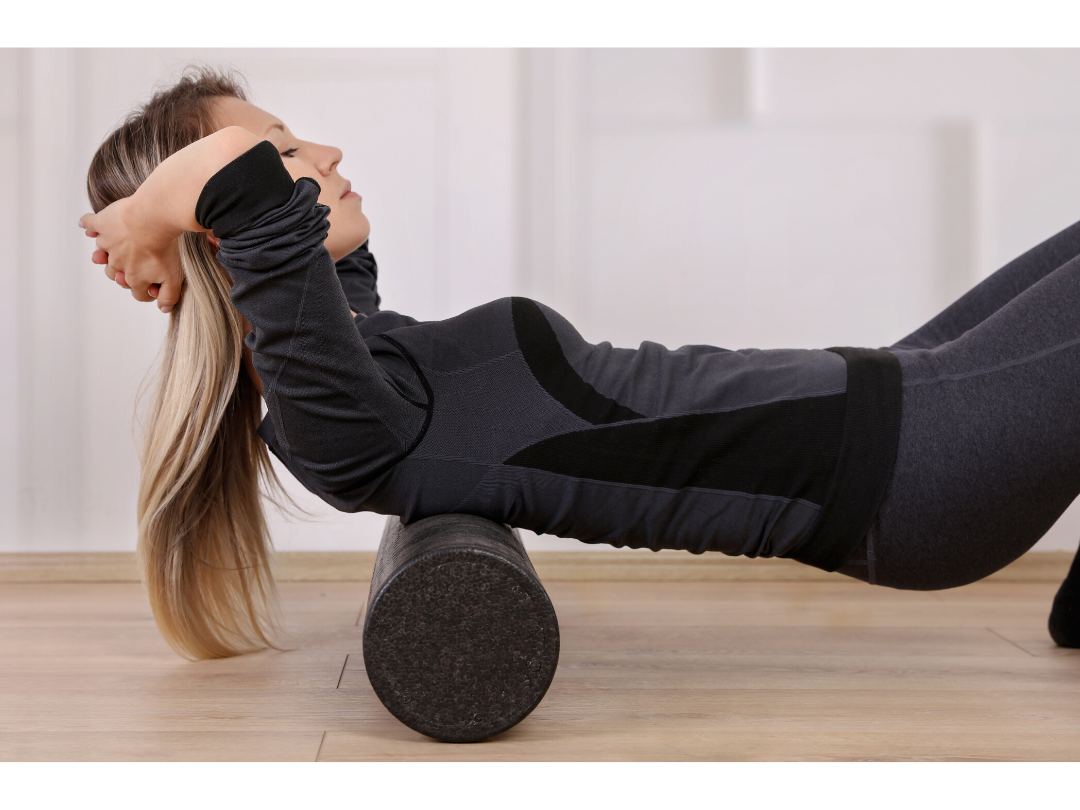Recovering from injury and returning to working out.

Getting an injury during a workout or in day-to-day life is fairly common and affects us all at some point. When it does what can we do to recover?
Once an injury has been diagnosed by a healthcare professional appropriately, it is possible to add in releases, stretches and strengthen exercises that aid recovery from the injury.
As part of the work, I do with my clients we can work around existing injuries but we can also use techniques over a number of months to help along the recovery process. All of this is alongside or after treatment from a physiotherapist or doctor.

The aim of rehabilitation is to reverse the effects of immobilization during the initial healing process. The immobilization period is a necessary part of the healing phase of any injury but prolonged immobilization will likely lead to significant loss of muscle strength, endurance, flexibility and co-ordination.
The basic goals of a rehabilitation program include: regaining muscle strength, power and endurance, joint range of movement, joint stability and exercise specific skills. It is also necessary to address any postural, anatomical or biomechanical dysfunctions that may have contributed to the initial injury.
There are 5 stages that we work through over a period of weeks or months.
- The initial stage is to release tension and tightness with pressure point releases. We can use a mix of a small massage ball (or a tennis ball), a foam roller and in some cases self-massage to help release the tightness. If the issue is a knee injury it is likely that the other leg, foot and hip are taking up the slack of the injured knee. Issues like Plantar Fasciitis (inflammation and soreness on the underside of the foot) are common, and the tightness and inflammation need to be treated.
- After a couple of sessions of just releases we add in mobility releases to the above massaging and rolling. The focus here is still on releasing but this stage includes a more moving releases like a 3D hamstring stretch (moving the foot through 3 angles to get into the three muscles that make up the hamstring) or a T mobility movement (creating a T shape with your feet and then externally rotating) to help release hip stiffness.
- Once the two releasing stages are worked through, and the client is starting to move with a bit more fluidity, we start to substitute releases for muscle balance and stability exercises. These might include using resistance bands to help build up stabilising muscles like the glute minimums and medias; or purposely and carefully adding in less stable positions. An example of this might be a movement like a roll down but with legs crossed, this makes the stabilising ankle and hip muscles kick to be used.
- Along side the balance work we will start to add in strengthening and endurance exercises, these are stronger and more challenging exercises. They are still body weight based but they are designed to create muscle fatigue and then they repair stronger than before. These include exercises like a wall sit with a ball squeeze or a single leg bridge pulse for 30+ seconds.
- The final stage is to start gradually adding in load, either with a resistance band or a weights; we might start with a squat with a resistance band around the top of the shins and progress on to a kettlebell goblet squat for example.
The rate at which we progress through the above stages will vary for each client, their injury and the receptiveness to the releases and stretches. Progress might not be a linear experience as it is impossible to rest the injured area fully and setbacks may occur along the way.
Injuries can heal without rehabilitation, but it can be the expense of the posture and this can lead to longer term dysfunction, as you get used to working around the injury, this movement pattern continues long after the injury and cause additional issues in the longer term.
Returning to new or past workouts should only take place once a full range of movement has returned and normal muscle strength, power, endurance and exercise specific skills is possible again.

Client Case Study
Sophie and I worked together earlier this year to help with an injury to her knee.
She approached me after she had a diagnosis from her physiotherapist of a patella disfunction and ITB syndrome (where the IT band rubs on the femur bone and gets irritated).
In her consultation we discussed her experience of soreness/ discomfort when squatting and lunging, she had recently completed an alternative movement which does not cause pain, like a hip hinge or a wall sit.
We chatted through her lifestyle and work – she is a mum of two very active boys and is also a Marketing Manager and has a sedate working day at a desk for 7-9 hours per day. Pre-pandemic she would have had client meetings in person but now is carrying these out online now and is less mobile than she was. Sophie walks and exercises about 3-5 times a week, family life and work permitting.
We discussed our availabilities and agreed that we would do one session a week on a Tuesday evening with a her repeating the session again at the weekend before our next session.
I explained the likely format that we would follow would be weeks 1-4 focusing on releases (using the foam roller and a trigger point release ball) and some dynamic movement releases. If releases were starting to help, we would move on the next phase.
Weeks 5-8 would focus on muscle balance and stability moves and gradually introducing some strethening moves, but that we would still complete mobility and releases where needed. Weeks 9-12 we would work on start to add load (resistance bands) or more challenging patterns into the sessions as we felt appropriate based on progress.
This is what Sophie had to say –
“My knee has caused me some challenges for a while, and I approached Sara to see if through exercise she could help me. She suggested a course of rehabilitation exercises, which initially focused on releasing the tension in my muscles and ligaments around my knee, this was then followed up with a series of strengthening exercises. Over the 12-week programme we have made huge progress and I am now hopeful that by continuing to do some of the exercises I can resume playing tennis. Thank you for all of your help Sara, highly recommended!”.
If you have recently been diagnosed with an injury or you are returning to exercise from an injury and you would like to chat about how best to return without a repeat please get in touch to arrange a discovery call.
